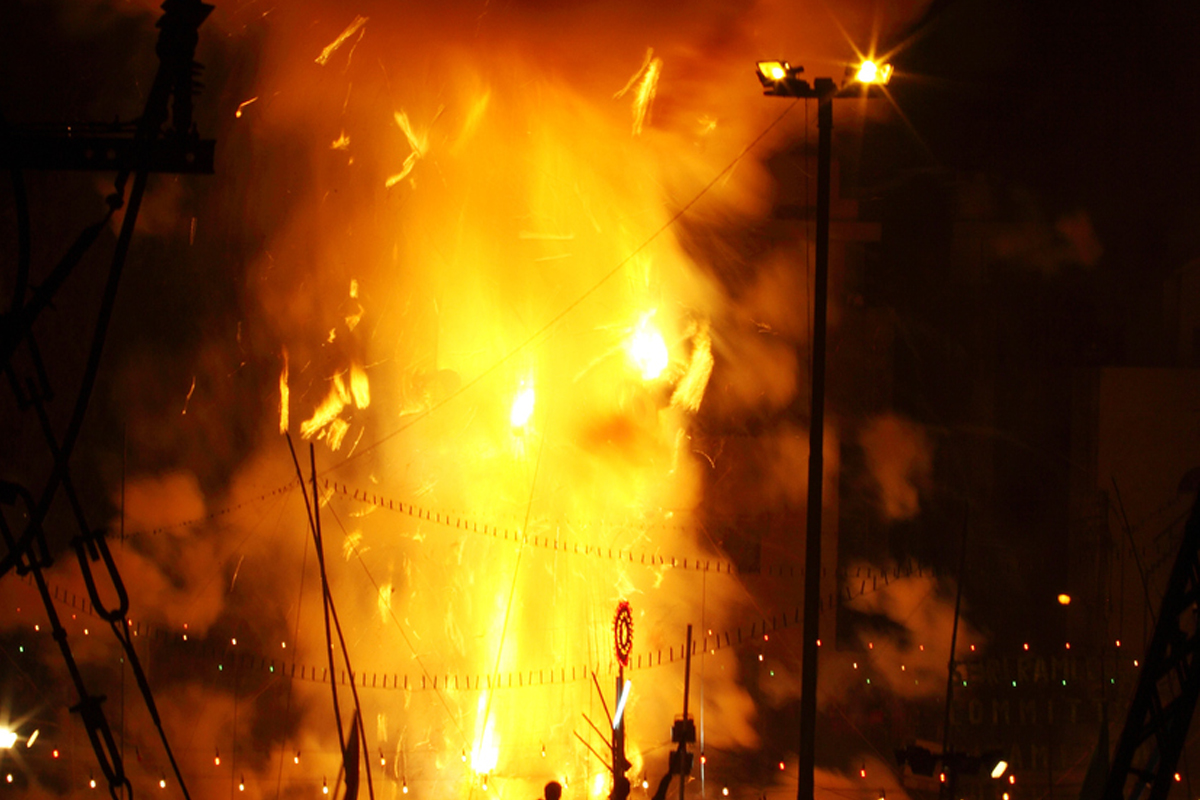To discourage the use of “single-use plastic” and protect the environment, a 30-35 feet Ravana effigy was made of plastic waste and disposed of mechanically rather than being burnt, as is the tradition, during the Dussehra celebrations at Ramlila Maidan.
The plastic would be used as a replacement of coal in the cement industry if used rightly.
Advertisement
“If you burn plastics otherwise, then it may emit foul gases. When it gets burnt at 1,400 degrees Celsius, its hydrocarbons gets fully burnt so it becomes environment-friendly,” said Mahendra Singhi, Dalmia Cement Bharat Ltd group CEO and Cement Manufacturers Association (CMA) president.
The CMA had recently announced that in collaboration with the Union Ministry of Jal Shakti and the Union Ministry of Housing and Urban Affairs (MoHUA) it would erect huge Ravanas made of plastic waste in a few cities for the Dussehra festival on 8 October.
“The social message we are trying to give is dispose of waste in a way that it doesn’t pollute,” said Singhi.
A 30-35 feet tall Ravana effigy was installed at the Ramlila ground here and put inside a cement kiln and disposed of “mechanically” with the use of “high temperature” without leaving any residue.
The crowd at the Ramlila grounds participated in the event where Ravana in its plastic form symbolised the evil demon harmful for the society and environment.
The dignitaries present on the occasion included Durga Shankar Mishra, secretary, MoHUA; Vijay Goel, ex-Union minister; Varsha Joshi, commissioner, North MCD; and others.
On the initiative, Mishra said, “We are immensely happy with the support of CMA in shramdaan activities. Singleuse plastics, a huge environmental threat, can be disposed of in cement kilns with no harmful environmental issues as it uses high temperature where hazardous gases get absorbed.”
He said, “MoHUA is in talks with cement manufacturers on the sustainable use of single-use plastic so that the discarded single plastic waste can be efficiently transported to cement plants.”
The crowd present at the Ramlila ground also reportedly took a pledge to avoid the use of plastics, when the countdown to dispose plastic waste Ravana mechanically in a representative cement plant started.
Singhi said: “We are glad to partner with the Government of India in this mammoth social and environmental cause. The cement industry is a critical partner in the government’s goal towards ‘samuchit niptaan’ ~ the total disposal of waste and plastics. The entire cement industry has come together to fight plastic pollution and make its contribution towards environment protection.” Aparna Dutt Sharma, CMA secretary-general, said, “We want to create awareness among the masses that plastic is the demon and a major environmental hazard.”
The MoHUA and the CMA collectively undertook this initiative involving plastic waste Ravana effigies across five cities in India, including Delhi, Noida, Lucknow, Raipur, and Ahmedabad.











